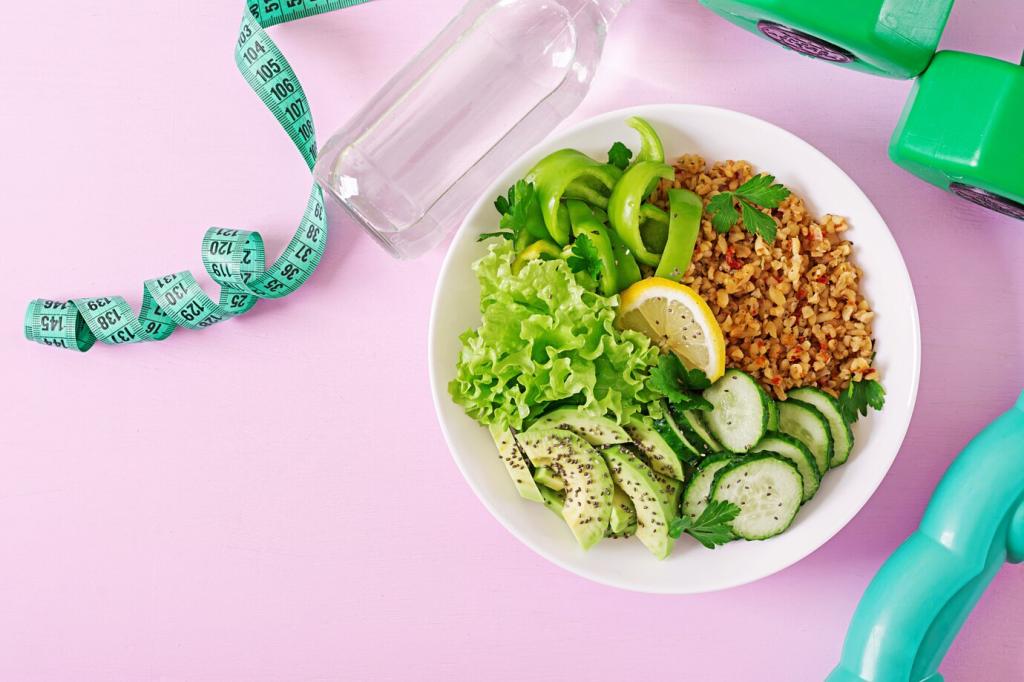Chosen theme: Pre and Post-Workout Nutrition Tips. Unlock steady energy before you train and faster recovery afterward with practical, science-backed ideas you can actually use today—then subscribe to get fresh weekly strategies.
Fueling Before You Train
Aim for a larger, balanced meal two to three hours before training to digest comfortably, or choose a smaller, quick option thirty to sixty minutes out. Experiment on low-stakes days, note how your stomach feels, and adjust timing incrementally for consistently strong sessions.
Fueling Before You Train
Center your pre-workout plate on easily digestible carbohydrates for energy, moderate protein for satiety, and minimal fat and fiber to reduce gastric distress. Think toast with banana and a little yogurt, or rice with egg whites, tailoring portions to session intensity and duration.


Smart Snacks for the Last Hour
Choose small, high-carb bites that settle quickly: a ripe banana, a honey packet, a small granola bar, or a couple of pretzels with jam. Keep fiber and fat low, sip water, and keep portions modest to avoid a sloshy stomach during warm-up or your first working set.

Post-Workout Recovery Essentials
The Carb–Protein Window: Practical, Not Panicked
There is no magical thirty-minute window for everyone, but refueling soon is still useful. Aim for a protein-rich snack and some carbohydrates within two hours, sooner if you train again the same day. Consistency across weeks matters more than any single perfect shake.
Protein Quality and Dose
Target 20–40 grams of high-quality protein post-workout, providing roughly 2–3 grams of leucine to kick-start muscle protein synthesis. Whey, milk, soy, or a well-formulated plant blend work. Pair with carbs, and remember that total daily protein intake ultimately drives progress.
Carb Targets by Session Type
After long or intense training, 1.0–1.2 g/kg carbohydrates in the first hour helps glycogen restoration, repeating hourly for four hours if a second session looms. For lighter days, simply return to balanced meals. Keep notes so you can match intake to training demands more confidently.


Hydration Strategy Around Workouts
Arrive at training well-hydrated by sipping regularly during the day and checking for pale-straw urine. In the hour before, take small, steady sips rather than chugging. Add a pinch of sodium if you tend to cramp, and avoid experimenting with new, super-sweet drinks on key days.
Hydration Strategy Around Workouts
A general guide is 0.4–0.8 liters per hour, adjusting for heat, humidity, and intensity. Include 300–700 mg sodium per liter during longer or sweatier efforts. Weigh yourself before and after a few sessions to estimate your personal sweat rate and refine your in-session plan.
Real-Life Plates and Stories

Maya trains at 6 a.m. and struggled with nausea until she swapped heavy breakfasts for oats with banana and a teaspoon of peanut butter. A small espresso, water, and chocolate milk afterward changed everything. She now logs steadier splits and finishes before the school run, energized.
Training Low vs. Racing High
Occasional low-glycogen training can build metabolic flexibility, but it is not for every session. Keep key workouts well-fueled, practice race-day fueling, and monitor mood, sleep, and performance. If fatigue lingers or motivation dips, return to consistent carbs and reassess your overall plan.
Gut Training Matters
Your gut adapts like muscles do. Gradually increase carbohydrate during long sessions toward 60–90 grams per hour using mixed sources like glucose and fructose. Practice with the exact foods or drinks you’ll use on big days so nerves and novelty do not derail your hard-earned fitness.
